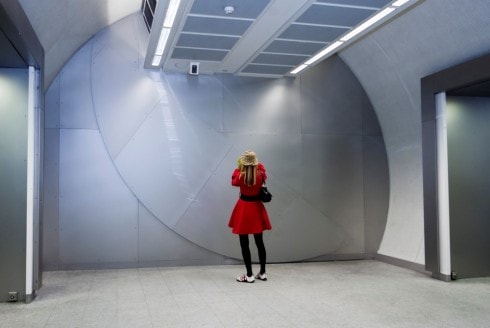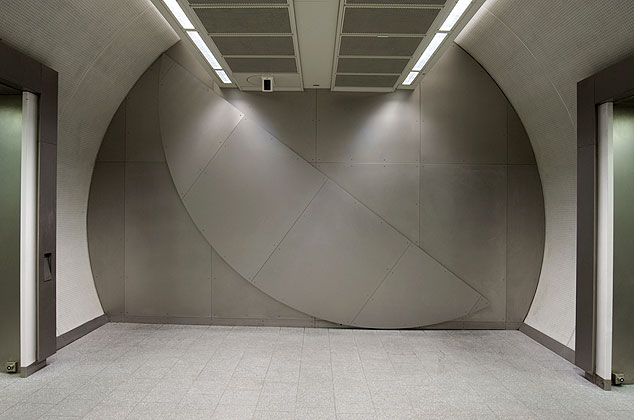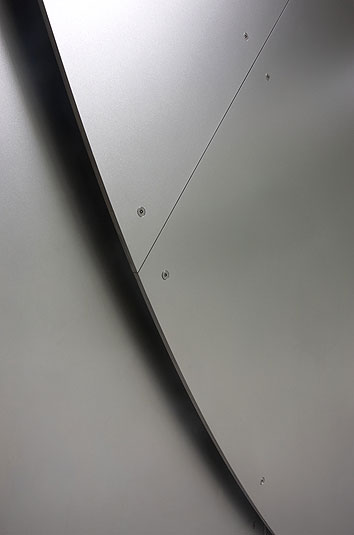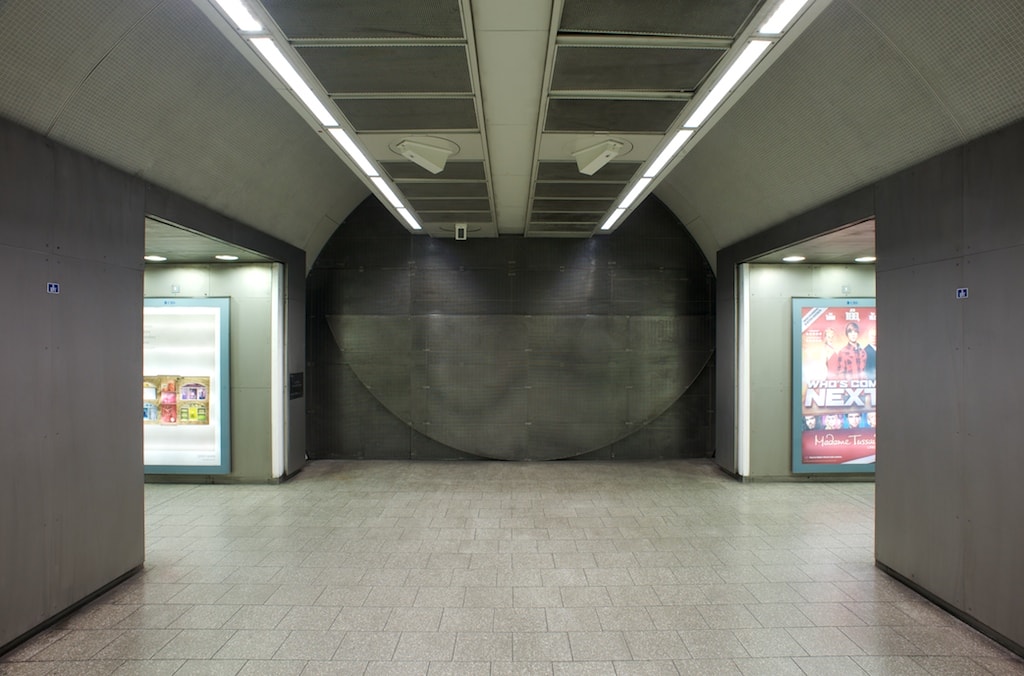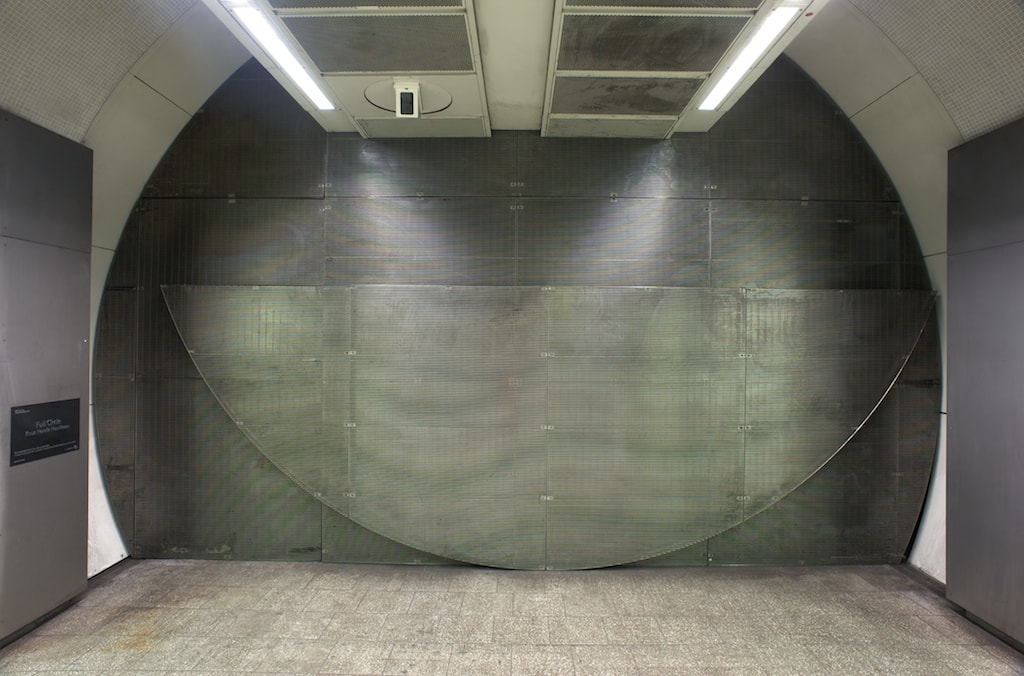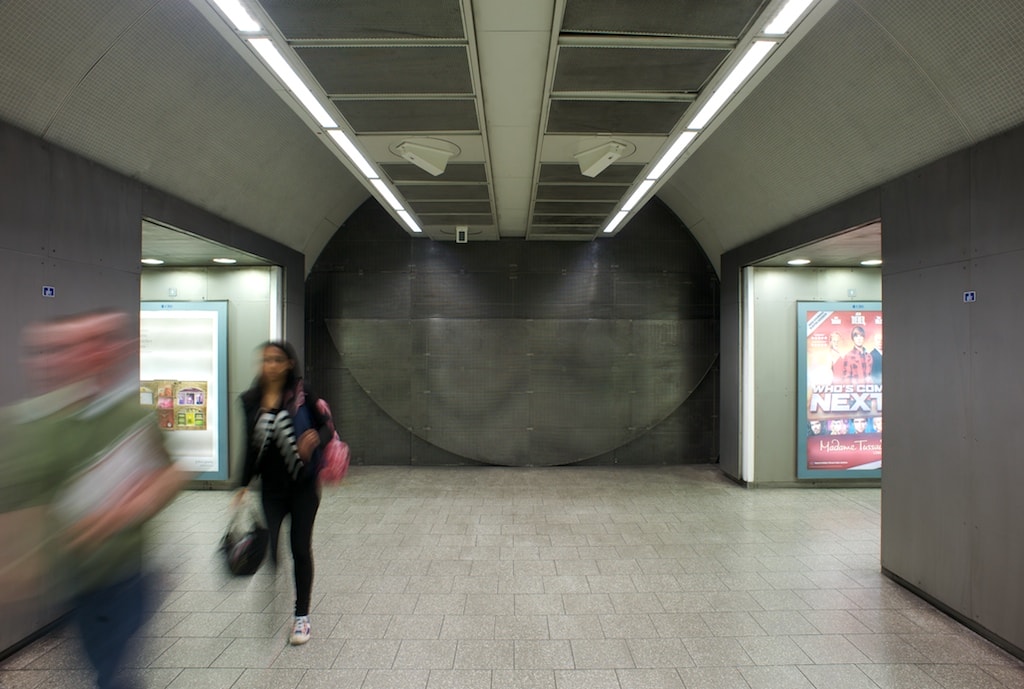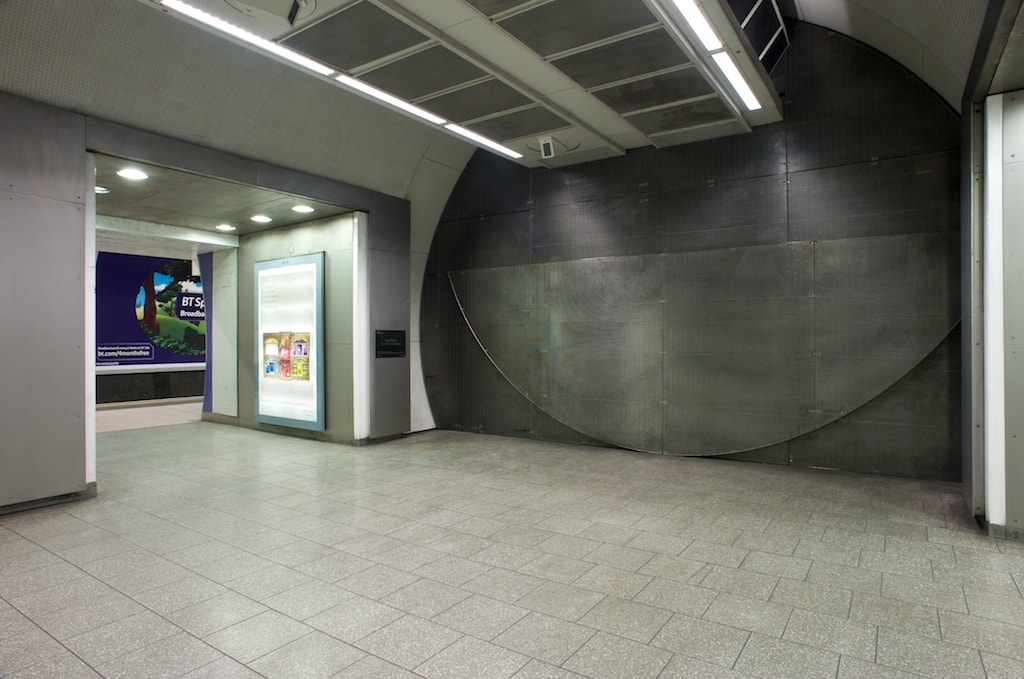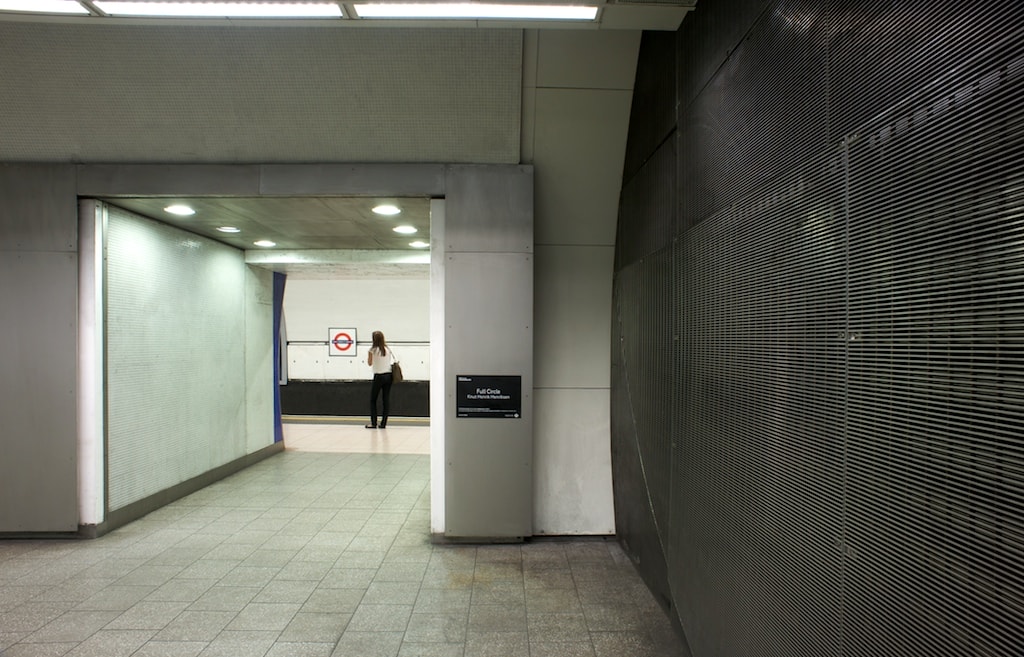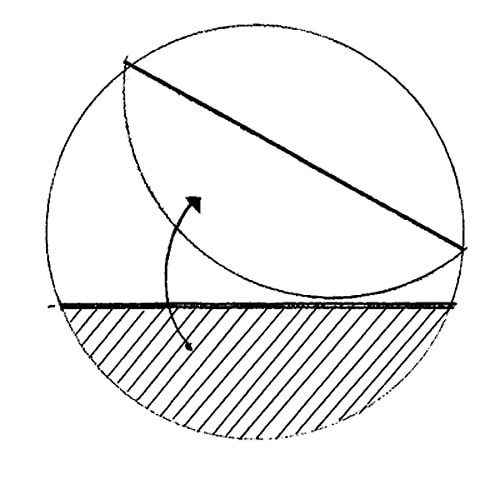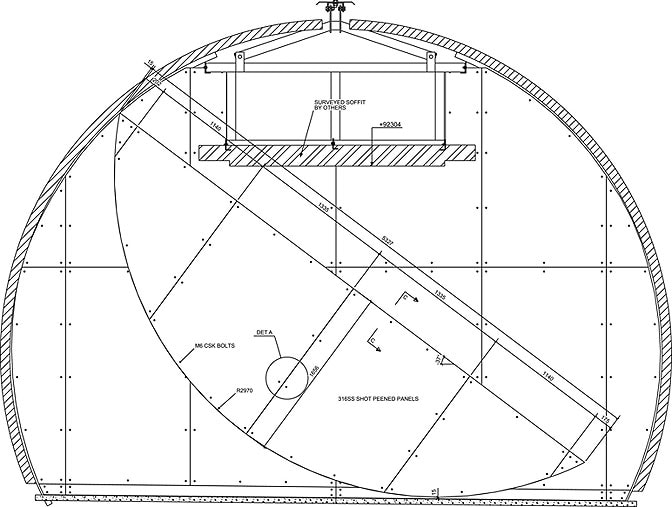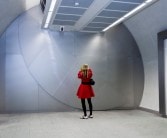Full Circle is a two-part work created especially for King’s Cross St. Pancras Underground station commissioned by Art on the Underground. It is an integral part of the station, installed in 2009 and 2011 as part of an upgrade project including two new ticket halls.
The work was conceived to be situated at the end of two new concourses, one for the Northern Line and the other for the Piccadilly line. Each of the sculptures reflect the context of the modernised station and its distinctive architectural style and language. They propose a reconsideration of this site and a re-examination of the way the station has been constructed for the contemporary city it serves.
The starting points for Full Circle are the circular end walls of the two concourse tunnels. In both instances, and as is common throughout the Tube, the circle is truncated where it meets the floor, implying a ‘lost’ segment beneath. This segment has been ‘reinstated’; conceptually exhumed by Henriksen and mounted as an integral architectural feature of the wall. In each case, the segment was fabricated by the station upgrade contractor from the same materials (shot-peened stainless steel in one case, stainless steel grid in the other) as the walls themselves. The result is almost incognito, yet remains elegantly obvious.
The precise positioning of each segment was, for Henriksen, the final in a sequence of decisions informed by the physical and architectural constraints of the two sites. On the Northern line concourse, the curved side of the segment rests on the floor, with one tip leaning against the arc of the tunnel wall. On the Piccadilly line concourse Henriksen has raised up the segment at the same angle as it would be beneath the floor. The flat edge is parallel to the floor, its curved side rests upon it and one tip is up against the tunnel arc. In each case there is an apparent casualness to the segment placement, offering a human gesture in a highly modernised and streamlined functional environment.
The construction and finish of the upgraded King’s Cross St. Pancras station uses contemporary, industrial materials including glass, stainless steel and ceramic tile. The apparent simplicity of Henriksen’s artwork for the site is borne out of a preciseness of vision that depends on a highly accurate execution to fit the concept and materials of the finishes for the entire station. The works offer a physical and psychological challenge to the architectural qualities of the concourses and an opportunity to contemplate the site and the station.
An economy of means sits at the heart of Henriksen’s practise. Whilst working on his proposal for King’s Cross St. Pancras he produced models from card and other ephemeral materials that enabled him to think through the site. These models then became the vehicle through which he presented his ideas. They arrived flat-packed but with a clear visual construction process that enabled them easily to be built as he intended.
Henriksen’s practise draws on a preoccupation with architecture and, to some extent, the continuing influence of Modernism on contemporary art and architecture. A European Modernist style is prevalent in London Underground, due in particular to the influence of Frank Pick, Managing Director in the 1930s, and Charles Holden, the architect for many Tube stations at that time. Pick played a key role in the Tube’s cultural heritage and the established tradition that art is an integral part of its service. Full Circle is the first permanent work to be installed on the network since the 1980s, bringing that tradition up to date and setting a new standard for the future.
Full Circle part one: Northern line concourse, completed December 2009
Full Circle part two: Piccadilly line concourse, completed December 2010
The artist would like to thank Hollybush Gardens for their support and guidance on this project.
This project was made possible by the support of the Norwegian Embassy and the Office for Contemporary Art Norway (OCA).
